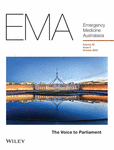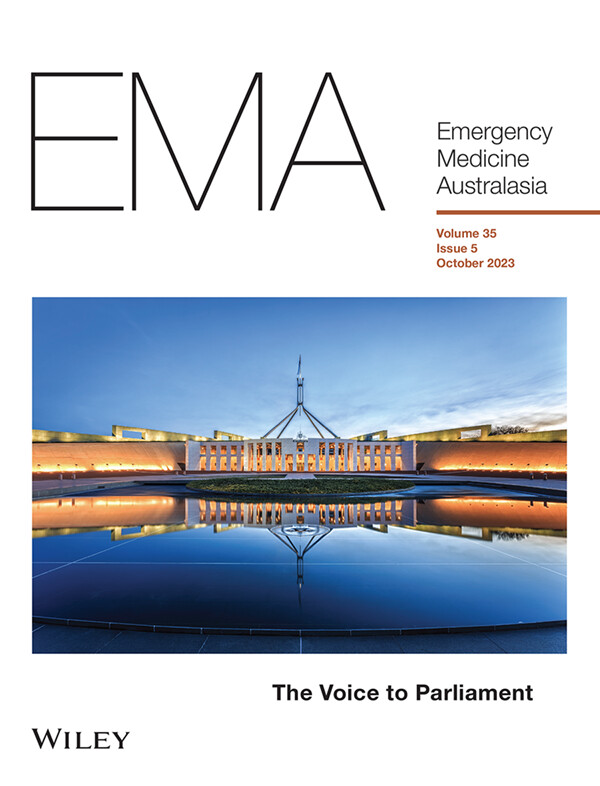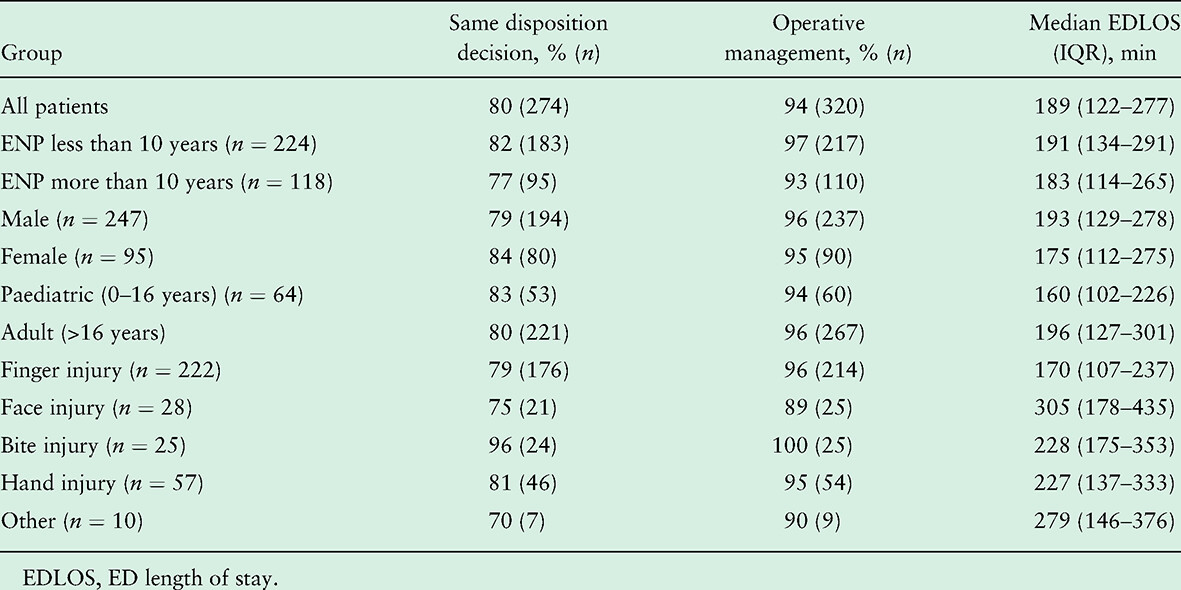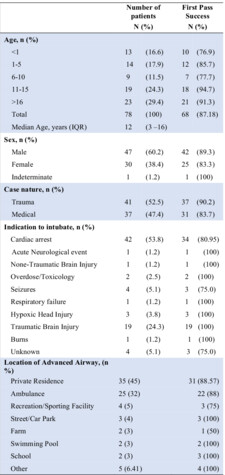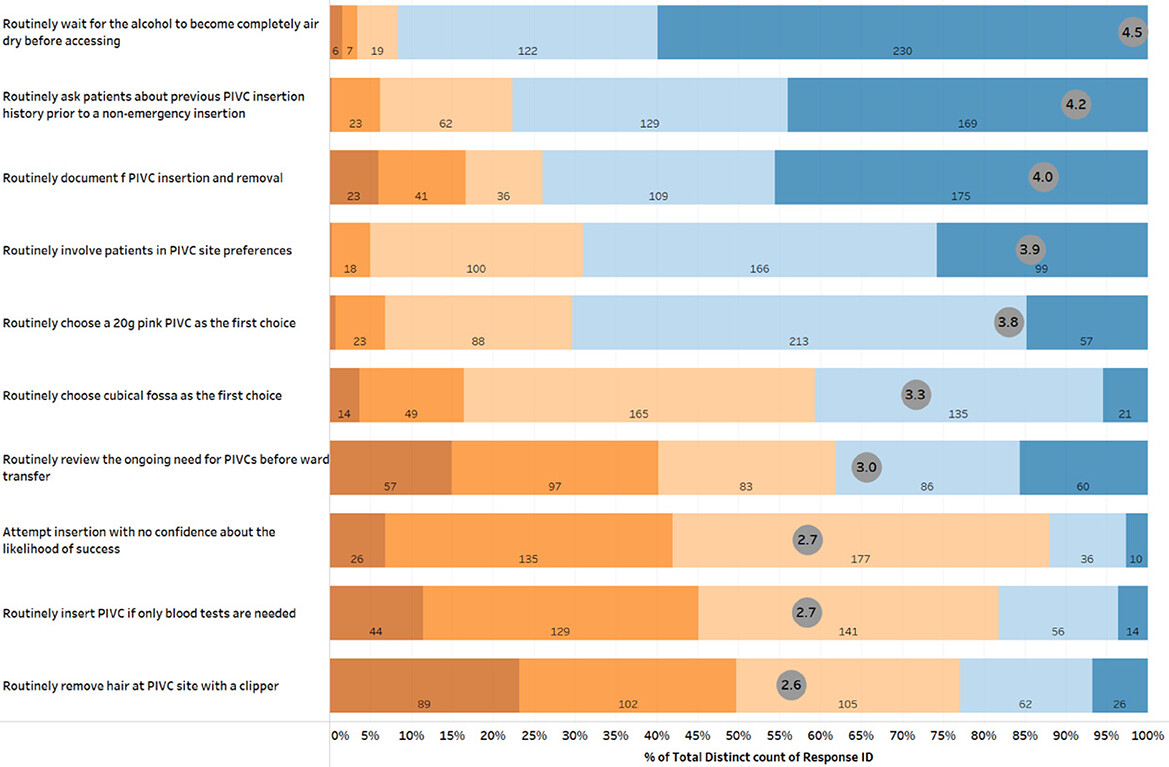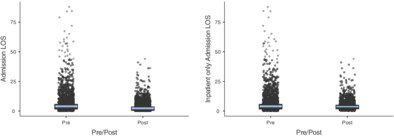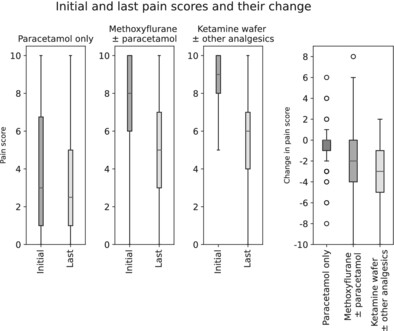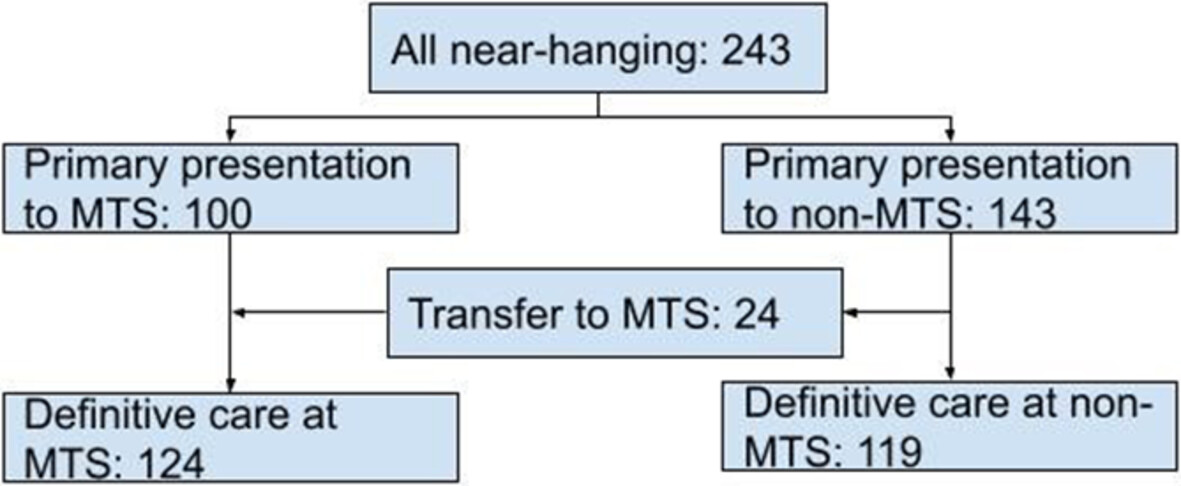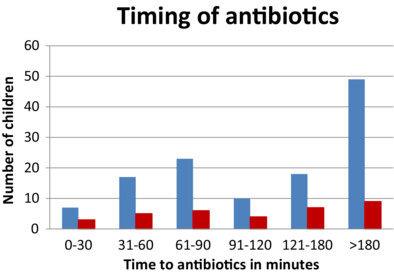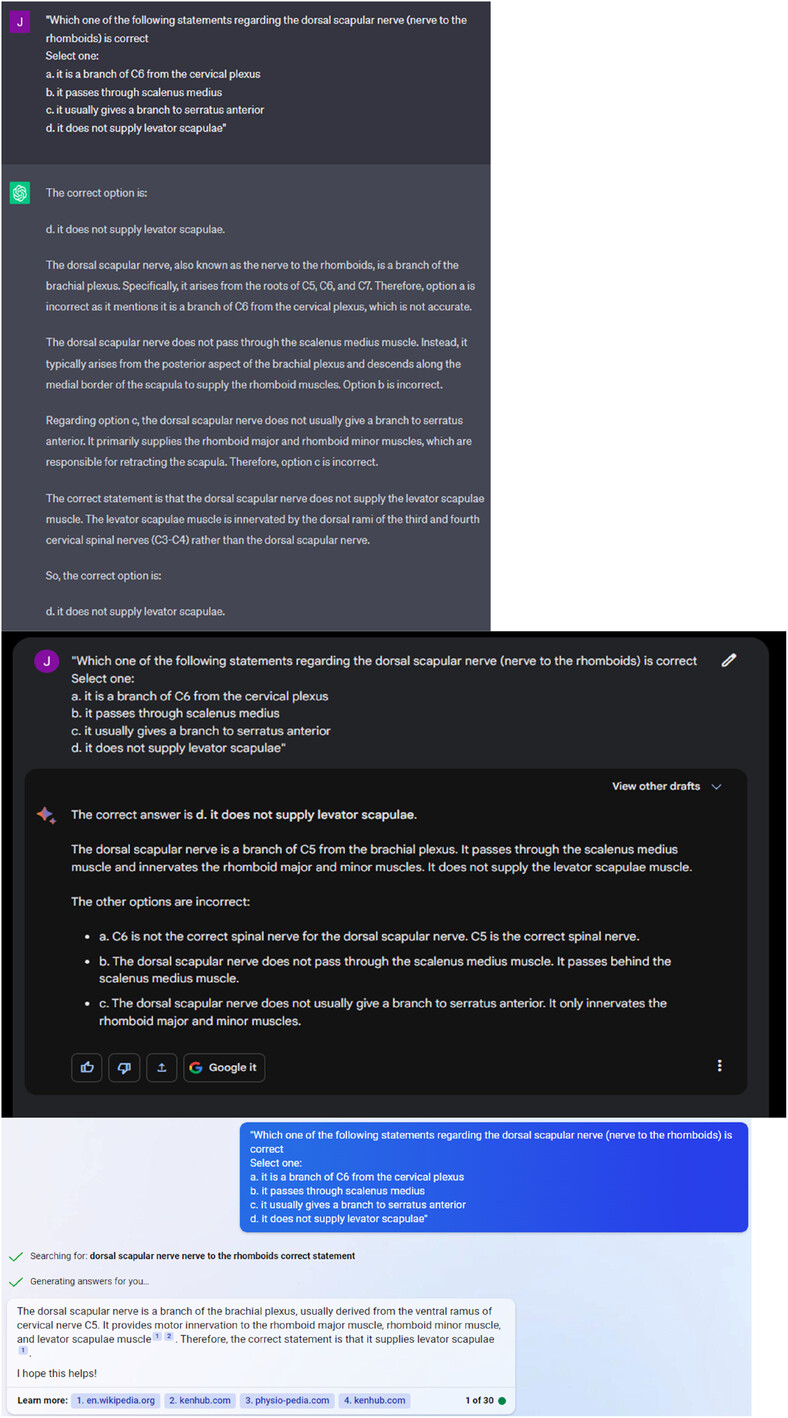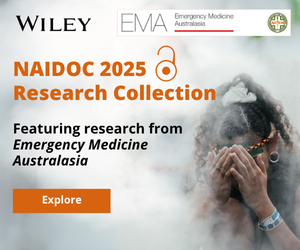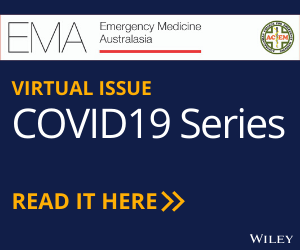Journal list menu
Export Citations
Download PDFs
Cover Image
Issue Information
In this October Issue
Editorial
A voice for Indigenous people: A clear and welcome path to self-determination and reconciliation
- Pages: 718-719
- First Published: 17 September 2023
Review Article
Review article: Accuracy of emergency physician performed point-of-care ultrasound of the thoracic aorta: A systematic review and narrative synthesis of the literature
- Pages: 720-730
- First Published: 26 June 2023

Thoracic aortic dissection and aneurysm remain difficult diagnoses to make in the ED. Point-of-care ultrasound can identify the intimal flap of thoracic aortic dissection directly as well as the indirect signs of dissection: pericardial effusion, aortic valve regurgitation and aortic dilation. This systematic review included 9 relevant studies. Sensitivity and specificity ranges for studies of thoracic aorta dissection are 41-91% and 94-100% respectively when an intimal flap is seen. Sensitivity and specificity ranges for studies of thoracic aorta dilation >40mm were 50-100% and 93-100% respectively; for >45mm ranges were 64-65% and 95-99%. Literature review identifies that point-of-care ultrasound is specific for dissection or aneurysm and can reduce time to diagnosis.
Original Research
Emergency examination authorities in Queensland, Australia
- Pages: 731-738
- First Published: 23 March 2023
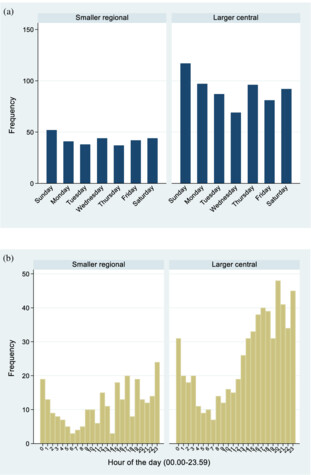
State-authorised involuntary detention of persons experiencing mental health emergencies is controversial but little studied. Queensland is the only Australian jurisdiction where a person is detained for an examination in an ED under public health law, specifically, an ‘emergency examination authority’. Although information is incomplete, most emergency examination authority patients are discharged following examination, yet many have experienced self-harm and more than half have serious substance abuse problems.
Determination of emergency nurse practitioner and plastic surgery trainee disposition decision agreement for plastic surgery emergency department presentations: A prospective study
- Pages: 739-745
- First Published: 27 March 2023
Time to embrace sepsis pathways and antibiotic prescribing decision support in the emergency department: Observations from a retrospective single site clinical audit
- Pages: 746-753
- First Published: 11 April 2023
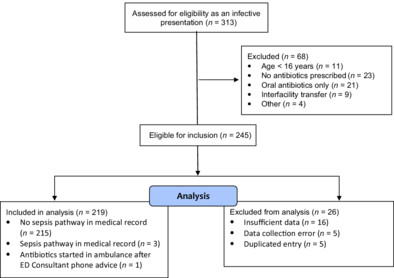
When comparing clinician documentation for infective presentations in ED against a formal sepsis pathway, a significantly lower proportion screened as potential sepsis and septic shock. Nearly one-third of the initial parenteral antibiotic prescriptions in ED were assessed as inappropriate indicating that there is a role for antibiotic prescribing guidance in ED.
Characteristics of paediatric pre-hospital intubation by Intensive Care Paramedics
- Pages: 754-758
- First Published: 05 April 2023
Exploring Australian emergency department clinicians' knowledge, attitudes and adherence to the national peripheral intravenous catheter clinical care standard: A cross-sectional national survey
- Pages: 759-770
- First Published: 16 April 2023
Emergency short stay area improves access and flow in a rural hospital
- Pages: 771-776
- First Published: 22 April 2023
Mental health emergency presentations across the Barwon South West region in Victoria, Australia: An epidemiological investigation
- Pages: 777-785
- First Published: 24 April 2023

The present study aimed to complete a retrospective synthesis of mental health emergency presentations across the Barwon South West (1 February 2017–31 December 2019), using data from the Victorian Emergency Minimum Dataset and Rural Acute Hospital Database Register. We identified 11 613 mental health emergency presentations. Neurotic, stress-related and somatoform disorders and mental and behavioural disorders because of psychoactive substance use were the most frequent types of presentations recorded.
Use of ketamine wafer for pain management by volunteer emergency medical technicians in rural Western Australia
- Pages: 786-791
- First Published: 01 May 2023
Drug and alcohol intoxication in major trauma: Associations, trends and outcomes over a decade
- Pages: 792-798
- First Published: 08 May 2023
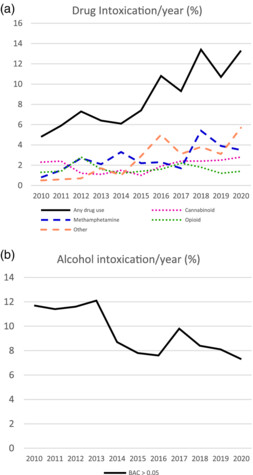
A contemporary Australian, single-centre, retrospective review of all major trauma patients over a 10-year period was performed, comparing injury characteristics, severity and outcomes among intoxicated and non-intoxicated patients. Among 9700 patients, we found escalating rates of drug intoxication and declining rates of alcohol intoxication. Intoxicated patients presented more frequently following violent and non-accidental injury and had greater odds of requiring intensive care despite no differences in Injury Severity Scores.
Impact of COVID-19 state-wide lockdown on older adult presentations to Queensland emergency departments
- Pages: 799-808
- First Published: 09 May 2023
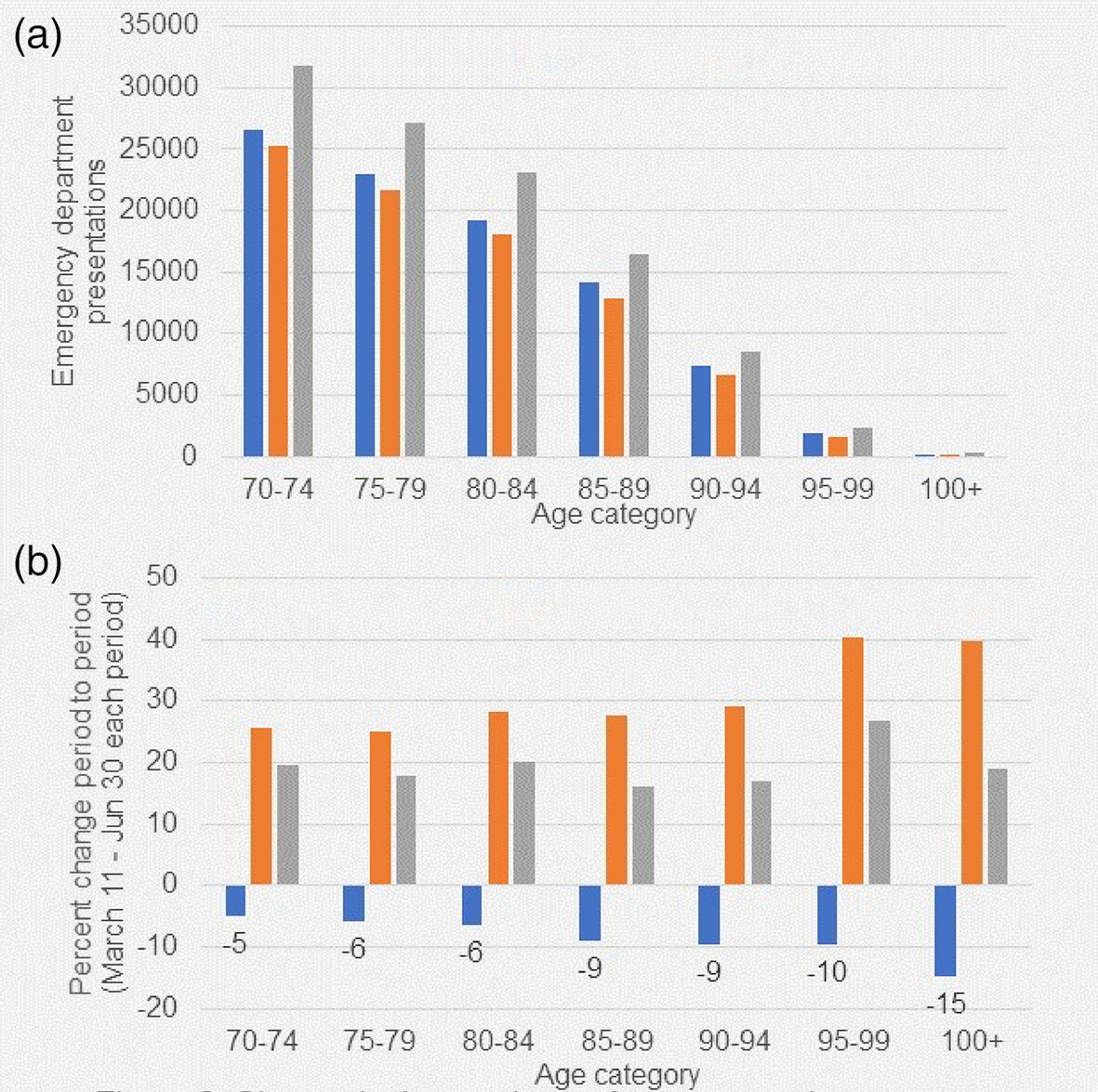
The objective is to determine the impact of the COVID-19 state-wide lockdown on ED presentations for older adults in Queensland, Australia. It is a retrospective cohort study pertaining to adults aged 70+ years. There was a significant decrease in presentation rates to EDs during the COVID-19 state-wide lockdown for the older population, followed by an increase in presentation rates, longer ED LOS, and an increased ED mortality rate, in the post-state-wide lockdown period.
Generative artificial intelligence: Can ChatGPT write a quality abstract?
- Pages: 809-811
- First Published: 04 May 2023
Evolving swabbing practices for COVID-19 in a New Zealand emergency department during the early stages of an emerging pandemic
- Pages: 812-820
- First Published: 14 May 2023
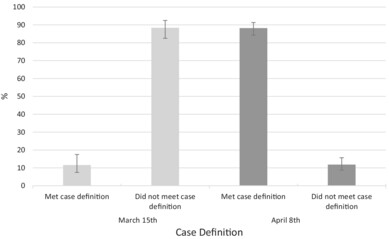
A retrospective audit of the alignment of COVID-19 swabs taken in Wellington ED with the March 15th and April 8th case definitions during New Zealand's Level 4 lockdown in 2020. There was poor alignment of testing with the March case definition at just 11.6% compared to the wider April case definition at 88.2%, and testing outside of criteria was associated with specific variables. Poor alignment of testing with case definitions may have negative impacts on resource management and improved communication from policymakers may improve case definition implementation.
Rational clinical approach to transient ischaemic attack, stroke and associated mimics: A retrospective cohort study
- Pages: 821-827
- First Published: 15 May 2023
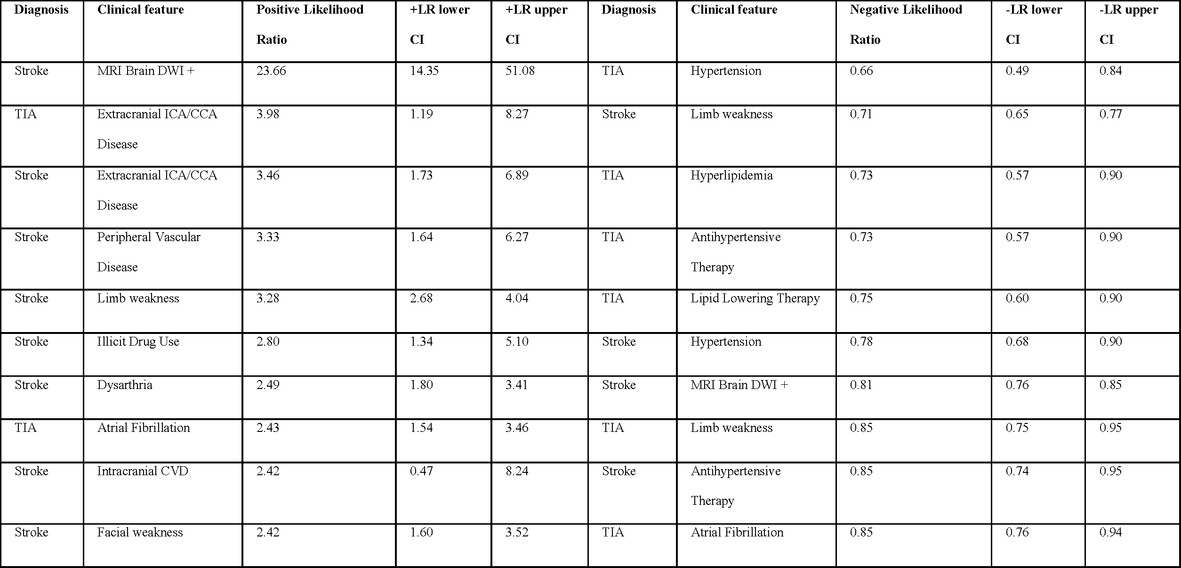
This single-centre retrospective cohort study was performed to identify the individual clinical features and risk factors most strongly associated with the diagnosis of transient neurological symptoms with a cerebrovascular cause, as compared to common transient ischaemic attack (TIA) mimics. Specific clinical features and risk factors were associated with the final diagnosis at TIA clinic. Further research is needed with the aim of developing new diagnostic tools based on risk factors and clinical features and implementing them into practice.
Implementation of an integrated emergency department acute atrial fibrillation pathway safely reduces cardioversions and hospitalisations: A comparative pre–post study
- Pages: 828-833
- First Published: 11 May 2023
Atrial fibrillation (AF) accounts for high rates of ED presentations. A high proportion of patients with AF will spontaneously revert to sinus rhythm. This study shows that a conservative rate-control strategy combined with next-day follow-up and delayed cardioversion is safe, and reduces the burden of AF on the health system.
Pathology testing in non-trauma patients presenting to the emergency department with recurrent seizures
- Pages: 834-841
- First Published: 01 June 2023
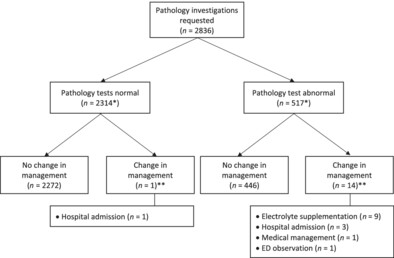
Seizures account for approximately 1% of all ED presentations. This study shows that in atraumatic recurrent seizure presentations to the ED pathology testing is frequently requested yet rarely results in meaningful changes in patient management. We recommend that clinicians rely on patient history and examination findings in conjunction with clinical gestalt when deciding on which investigations to request for this population.
Twenty-year perspective on blunt traumatic diaphragmatic injury in level 1 trauma centre: Early versus delayed diagnosis injury patterns and outcomes
- Pages: 842-848
- First Published: 12 June 2023
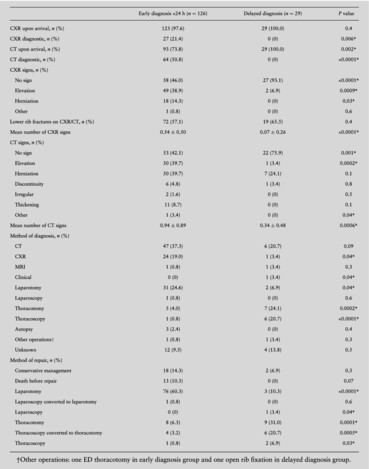
The diagnosis of traumatic diaphragmatic injury is challenging, without frank signs of herniation of abdominal contents on CXR or CT, the diagnosis is often not made on initial imaging. In patients with the evidence of blunt traumatic injury in the lower-chest/upper-abdomen, a high degree of clinical suspicion should be held and follow-up CXR's/CT's arranged.
Definitive management of near-hanging at major versus non-major trauma centres
- Pages: 849-854
- First Published: 16 June 2023
Paediatric Emergency Medicine
Timing of antibiotics in febrile children meeting sepsis criteria at a paediatric emergency department
- Pages: 855-861
- First Published: 27 July 2023
Trainee Focus
Introduction to quality improvement: From corridor conversation to system change
- Pages: 862-863
- First Published: 26 August 2023
Participating in quality improvement for emergency care: Some principles and practical tips
- Pages: 864-865
- First Published: 21 August 2023
Quality improvement: A core skill for the next generation of emergency physicians
- Pages: 866-867
- First Published: 22 August 2023
Quality immersion: Are dedicated placements the answer?
- Pages: 868-870
- First Published: 27 August 2023
Short Reports
Choosing Wisely audit: Blood gas ordering in the emergency department
- Pages: 871-872
- First Published: 14 June 2023
Closing the miscommunication gap: A user guide to developing picture-based communication tools for Aboriginal and Torres Strait Islander peoples in emergency departments
- Pages: 873-875
- First Published: 04 July 2023
Will code one day run a code? Performance of language models on ACEM primary examinations and implications
- Pages: 876-878
- First Published: 06 July 2023
Introduction of QScript real-time prescription monitoring system was associated with a fall in pregabalin poisoning presentations to a clinical toxicology unit
- Pages: 879-881
- First Published: 17 August 2023
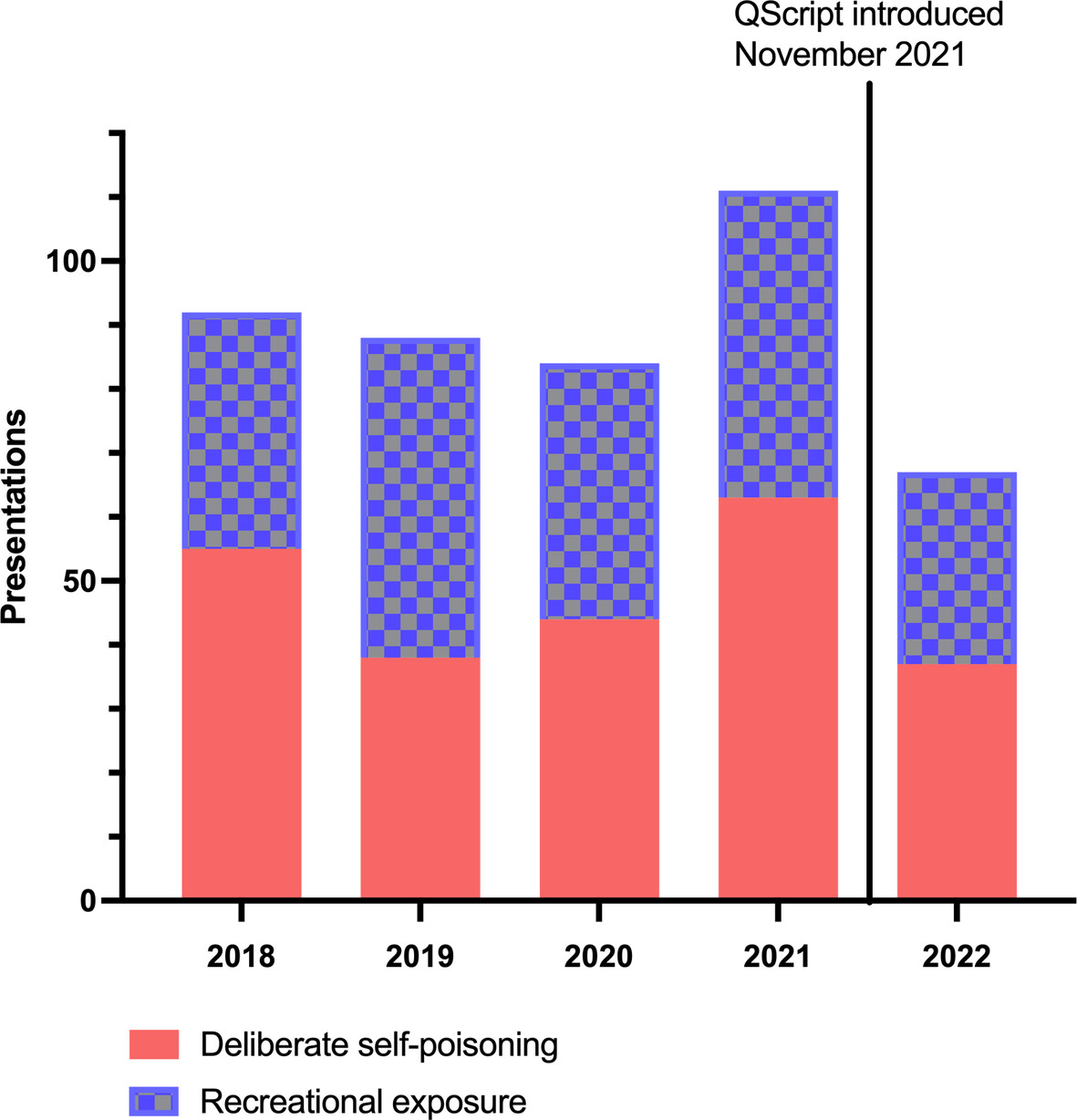
This is a retrospective review of pregabalin-related poisoning presentations to a tertiary Australian Emergency Department in the four years prior to, and one year following the introduction of QScript Real Time Prescription Monitoring System. Pregabalin-related poisoning presentations fell by 28% from an average of 98 presentations annually over the four years prior to QScript implementation to 71 in 2022. The severity of poisonings was similar over the periods. The introduction of QScript was associated with a reduction in pregabalin-related poisoning presentations.
Letters to the Editor
Re: Magnetic resonance imaging cervical spine in trauma: A retrospective single-centre audit of patient outcomes
- Page: 882
- First Published: 07 August 2023
Response to Re: Magnetic resonance imaging cervical spine in trauma: A retrospective single-centre audit of patient outcomes
- Pages: 882-883
- First Published: 07 August 2023
Re: Implementation of an integrated emergency department acute atrial fibrillation pathway safely reduces cardioversions and hospitalisations: A comparative pre–post study
- Pages: 883-884
- First Published: 12 July 2023
Response to Re: Implementation of an integrated emergency department acute atrial fibrillation pathway safely reduces cardioversions and hospitalisations: A comparative pre–post study
- Page: 884
- First Published: 12 July 2023
Should risky social media use be considered an emergency medicine issue?
- Page: 885
- First Published: 06 August 2023
More time per patient or more patients per unit time?
- Pages: 885-886
- First Published: 14 August 2023
From Other Journals
Opinion – Online only article
ACEM adding its voice to the Voice hits the wrong note
- Pages: E1-E2
- First Published: 12 July 2023




